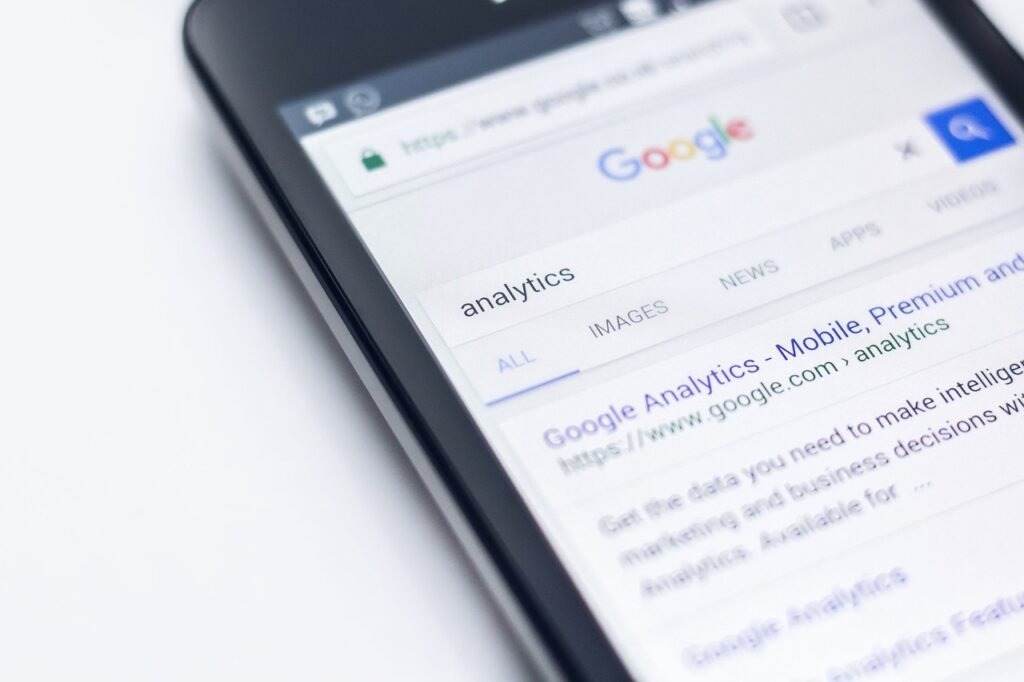This Article has been revised, edited and added to, by Poulomi Chakraborty.
- The Evolution of Influence: Social Media vs. Traditional Media
- Crafting a Winning Strategy: Selecting the Right Influencers
- Building Collaborative Partnerships
- Leveraging Content: Types and Tactics for Maximum Impact
- Making it Measurable: Tracking Success
- Nurturing Long-Term Relationships with Influencers
- The Benefits of Long-Term Partnerships
- Strategies for Maintaining Long-Term Relationships
- Developing a Mutual Growth Mindset
- Customizing Compensation Packages
- Instituting Regular Strategic Meetings
- Leveraging Technology for Relationship Management
- Fostering an Inclusive Brand Community
- Addressing Challenges with Transparency and Agility
- Integrating Influencer Insights into Broader Marketing Strategies
- Harnessing User-Generated Content: Amplifying Reach and Authenticity
- Optimizing Campaigns with Data-Driven Insights
- Future Trends in Influencer Marketing
- Conclusion
In the digital age, the power of social media is undeniable. From small startups to multinational companies, leveraging social media through influencer marketing has become an indispensable strategy. This form of marketing not only enhances visibility but also significantly boosts engagement and conversion rates. By understanding how to effectively partner with influencers, businesses can tap into their followers’ trust and influence buying decisions like never before. Let’s dive into how businesses can harness this power to achieve impressive marketing results.
The Evolution of Influence: Social Media vs. Traditional Media
When discussing the influence of social media, it’s crucial to compare it with traditional media forms like TV, print, and radio. This comparison not only highlights the shift in consumer attention but also showcases the unique opportunities that social media offers for influencer marketing.
Reach and Accessibility
Social media platforms provide unprecedented reach and accessibility. Unlike traditional media, which often requires significant investment in advertising space and is limited by geographical boundaries, social media breaks down these barriers.
An influencer in New York can effortlessly connect with fans in Tokyo, Paris, or Sydney. The global nature of social media allows influencers to build a diverse, worldwide audience.
Moreover, the accessibility of social media platforms means that anyone with an internet connection can view influencer content anytime, anywhere. This 24/7 accessibility leads to more consistent and frequent interactions between influencers and their followers, strengthening the relationship and trust over time.
Engagement and Interaction
Traditional media is largely one-dimensional, offering limited interaction between the content creator and the audience. In contrast, social media thrives on interaction.
Followers can like, comment, share, and even directly message influencers. This two-way communication fosters a community-like environment that traditional media struggles to achieve.
For businesses, this means that influencer collaborations can lead to more than just awareness—they can spark conversations and drive engagement. When influencers ask their followers for opinions or encourage them to participate in challenges, it amplifies the engagement level, making the marketing campaign more dynamic and memorable.
Cost-Effectiveness
Investing in traditional media can be costly, especially for prime advertising slots. Social media, however, offers a more cost-effective solution. While top-tier influencers may command high fees, there are thousands of micro-influencers with smaller but highly engaged audiences.
Collaborating with these influencers can be more affordable and often yields a higher return on investment due to their targeted and loyal followers.
Moreover, the cost of creating content on social media is generally lower. Influencers typically handle the production themselves, using personal devices and editing software, which reduces the overall budget required for content creation.
Measurability
One of the significant advantages of social media over traditional media is the ability to track and measure the success of marketing campaigns in real-time. Social media platforms offer detailed analytics about views, engagement rates, click-through rates, and even the demographic information of the people interacting with the content.
This data is invaluable for businesses to assess the effectiveness of their influencer partnerships and adjust their strategies accordingly.
In conclusion, when compared to traditional media, social media offers a more flexible, interactive, and cost-effective platform for influencer marketing. The ability to engage directly with a global audience, coupled with the capacity to measure the impact of campaigns accurately, makes social media an essential tool for modern marketers.
Crafting a Winning Strategy: Selecting the Right Influencers
The success of an influencer marketing campaign hinges significantly on the choice of influencers. Not all influencers are created equal, and finding the right match for your brand is paramount. Let’s explore how to identify and select influencers that can not only reach but resonate with your target audience.
Understanding Your Audience
Before you start scouting for influencers, it’s critical to have a deep understanding of your audience. What are their interests? Which social media platforms do they frequent the most? What type of content do they engage with? Answering these questions will guide you in selecting influencers who align with your audience’s preferences and behaviors.
Alignment with Brand Values
The influencers you choose should embody the values and aesthetics of your brand. This alignment ensures that their promotions appear authentic and are more likely to be trusted by their followers.
For instance, if you are a brand promoting sustainable living, partnering with influencers who are known for their advocacy in sustainability and eco-friendly practices would enhance credibility and relevance.
Reach vs. Relevance
While it might be tempting to go after influencers with the largest followings, size isn’t everything. It’s often more effective to work with micro-influencers whose niches align closely with your brand. These influencers may have smaller followings, but their audiences are usually more engaged and loyal, which can lead to higher conversion rates.
Engagement Rates
Evaluating an influencer’s engagement rate is crucial. This metric, typically a percentage, measures how actively involved the influencer’s audience is with their content. High engagement rates often indicate a healthy, active, and attentive audience, which is more valuable than a large but passive follower count.
Track Record and Reputation
Finally, assess the track record and reputation of potential influencers. Look at their previous collaborations: How well did they perform? Were they able to meet the goals set by other brands? Also, consider their professionalism and authenticity in engaging with their community. An influencer with a positive reputation is more likely to be a reliable partner for your campaign.
Building Collaborative Partnerships
Once you’ve identified the right influencers, the next step is to cultivate a relationship that encourages collaboration and innovation. Influencer relationships should be more than transactional; they should be partnerships where both parties feel valued and invested in the success of the campaign.
Transparent Communication
Open and clear communication forms the backbone of any successful influencer partnership. From the outset, define your goals, expectations, deliverables, and timelines. Make sure the influencer fully understands your brand’s vision and their role in bringing it to life.
Creative Freedom
While it’s important to have specific guidelines, allowing influencers creative freedom can lead to more authentic and effective content. Influencers know their audience best, so trusting them to create content that will resonate can yield better results than overly scripted mandates.
Ongoing Support and Feedback
Provide ongoing support and feedback throughout the campaign. This can include providing resources they might need or feedback on content drafts. Regular check-ins can help ensure that the campaign stays on track and any issues are addressed promptly.
Selecting the right influencers and building strong, collaborative partnerships are fundamental to unleashing the true power of social media in influencer marketing. With the right strategy, influencers can become powerful allies in your marketing efforts, driving awareness, engagement, and conversions.
Cultivating a Shared Vision
For a partnership to be fruitful, it is essential that both the brand and the influencer share a common vision for what they aim to achieve. Startup founders must engage in deep discussions with their chosen influencers to align on the end goals—be it increasing brand awareness, driving sales, or entering new markets. This alignment ensures that all activities are purpose-driven and contribute meaningfully towards mutual objectives. By crafting a narrative that resonates with both the brand’s ethos and the influencer’s personal brand, a more cohesive and impactful message is delivered to the audience.
Strategic Content Collaboration
Moving beyond the typical sponsorships, startups should explore co-creating content that leverages the unique strengths and insights of the influencer. This could involve joint webinars, co-hosted events, or even shared social media live sessions where both the influencer and the brand’s founders participate.
Such interactive formats not only enhance content engagement but also humanize the brand, making it more relatable to the audience. Additionally, integrating the influencer into product development phases—such as beta testing or product feedback sessions—can provide valuable insights that lead to better product-market fit, while also demonstrating the influencer’s integral role in the brand’s journey.
Establishing Clear Communication Protocols
Clear and consistent communication is the backbone of any successful partnership. For startups, establishing regular intervals for updates, feedback, and future planning sessions is crucial.
These should be scheduled at strategic points throughout the campaign to assess progress and adjust strategies as necessary. Moreover, utilizing collaborative tools such as shared calendars, project management software, and real-time communication platforms can enhance transparency and efficiency.
These tools help in keeping both parties informed and engaged, reducing misunderstandings and fostering a culture of open communication.
Financial Incentives and Growth Opportunities
While financial compensation is standard in influencer agreements, startups might consider creative compensation strategies that align with long-term growth. For instance, offering equity stakes or performance-based bonuses can motivate influencers to go beyond one-time promotions and invest in the long-term success of the brand.
Additionally, providing opportunities for influencers to expand their own brand through co-branded products or shared intellectual property can create a deeper sense of partnership and loyalty.
Legal and Ethical Considerations
To safeguard both the brand and the influencer, it is imperative to outline all terms and conditions of the partnership in a formal contract. This contract should cover aspects such as content ownership rights, usage rights, disclosure agreements, and termination clauses.
It is also important to ensure that all influencer promotions comply with legal standards, such as those set by the Federal Trade Commission (FTC) regarding advertising disclosures.
Adhering to these guidelines not only protects against legal repercussions but also maintains the integrity and trustworthiness of both the influencer and the brand.
By implementing these strategic elements into building collaborative partnerships, startup founders can maximize the benefits of influencer marketing. This approach not only enhances brand visibility and credibility but also fosters sustainable growth and community loyalty, which are invaluable in the competitive landscape of startups.
Leveraging Content: Types and Tactics for Maximum Impact
After establishing a solid relationship with the right influencers, the next critical step is to decide on the types of content that will make your campaign shine. Different content types can trigger various responses from the audience, and choosing the right mix can dramatically amplify the effectiveness of your influencer marketing efforts.
Video Content: The Engagement King
Video content reigns supreme on social media due to its high engagement rates. Videos allow for a richer, more immersive experience, enabling influencers to showcase products or services in action. This could range from detailed tutorials, unboxing experiences, or lifestyle videos that incorporate your product organically into daily life.
For example, a beauty influencer can create a make-up tutorial using your products, demonstrating their effectiveness and how to use them. These videos not only provide visual proof of your product’s value but also help in educating the audience, making them more likely to purchase.
Storytelling through Images
While videos are highly engaging, never underestimate the power of a well-crafted image. Images can convey emotions, aesthetics, and messages quickly and effectively. Influencers can use high-quality photos to create a narrative around your brand, whether it’s showcasing the luxurious feel of a product or the practical benefits of a service.
Photos are particularly effective on platforms like Instagram and Pinterest, where visual aesthetics play a crucial role in content consumption. Encouraging influencers to use their photography skills can result in authentic, appealing posts that grab attention and inspire followers to explore your brand further.
Blog Posts and Reviews
In-depth blog posts and reviews are excellent for providing detailed information about your products or services. When influencers integrate personal stories or comprehensive reviews into their blogs, it lends credibility and substance to the promotional content.
These longer-form pieces are particularly valuable for SEO and can drive traffic to both the influencer’s and your own websites. They are ideal for followers who seek more detailed information before making a purchase decision and can significantly influence buyer behavior by addressing concerns and highlighting benefits.
Interactive Content: Polls, Quizzes, and More
Engaging the audience interactively can significantly enhance the impact of your campaign. Influencers can use polls, quizzes, or question-and-answer sessions to interact directly with their followers, making the promotional content more engaging and personalized.
This type of content not only boosts engagement but also provides valuable insights into the audience’s preferences and opinions, which can be useful for future marketing strategies. It makes the audience feel like part of a community and increases their connection to the brand.
Making it Measurable: Tracking Success
No influencer marketing campaign is complete without a robust framework to measure its success. Establishing clear metrics and KPIs (Key Performance Indicators) at the beginning of the campaign is essential. This allows you to track progress and evaluate the effectiveness of the partnership.
Key Metrics to Track
- Engagement Rate: This includes likes, comments, shares, and overall interaction with the content.
- Reach and Impressions: How many people saw the content?
- Conversion Rates: How many viewers took a specific action, like visiting your website or making a purchase?
- ROI: Overall return on investment from the influencer marketing campaign.
By setting these metrics, you can objectively assess the impact of your influencer marketing efforts and make informed decisions on future campaigns.
Establishing Comprehensive Metrics
The first step in making influencer marketing measurable is to establish comprehensive metrics that align with specific business objectives. While engagement and reach are standard metrics, startups should consider integrating advanced metrics like share of voice, brand sentiment, and influencer impact score, which provides a more nuanced view of an influencer’s overall impact on brand perception.
Additionally, tracking the customer journey from influencer interactions to final purchases can reveal insights into the buying process and help identify potential bottlenecks or high-converting pathways.
Integrating Analytics Tools
Utilizing sophisticated analytics tools can automate the tracking process and provide real-time data that is crucial for agile startups. These tools can segment data based on demographics, engagement levels, and conversion rates, making it easier to tailor future campaigns to the most responsive segments.
Furthermore, integrating influencer analytics with overall marketing analytics allows for a holistic view of how influencer efforts complement other marketing initiatives, facilitating a more coordinated strategy.
Conducting Regular Performance Reviews
Regular performance reviews with influencers can lead to insights that raw data alone may not reveal. These reviews should go beyond assessing compliance with contractual obligations to exploring what influencers feel about the brand and their personal observations of audience reactions.
Such qualitative insights can be invaluable in adjusting the messaging or creative direction of ongoing campaigns.
Experimentation and A/B Testing
Experimentation should be a core aspect of any startup’s strategy, particularly in influencer marketing. A/B testing different types of content, posting schedules, and calls-to-action with various influencers can uncover what resonates best with the target audience.
This not only optimizes current campaigns but also informs the content strategy for future influencer partnerships.
Advanced Attribution Modeling
For more sophisticated analysis, startups should consider advanced attribution modeling techniques. These models can help determine the specific impact of influencer marketing on sales and other key performance indicators by attributing conversions across multiple touchpoints. This is particularly useful in a multi-channel marketing environment where customers interact with multiple marketing stimuli before making a purchase.
Building a Feedback Loop
Incorporating a feedback loop into the measurement process allows startups to continuously refine their influencer marketing strategies based on performance data. This involves not just internal reviews but also gathering feedback from the influencers and the audience. Implementing regular surveys, comment analysis, and direct audience interaction can provide actionable insights that enhance the relevance and effectiveness of future campaigns.
By expanding the scope of measurement in influencer marketing, startups can transform raw data into strategic insights that drive growth. More than just tracking, these measures facilitate a deeper understanding of market dynamics and consumer behavior, empowering startups to make data-driven decisions that align with their long-term business objectives.

Related: Check out our free SEO suite

Nurturing Long-Term Relationships with Influencers
To truly harness the power of influencer marketing, it’s essential to move beyond one-off campaigns and towards building long-term relationships with influencers. These sustained partnerships can bring about a deeper integration of influencers with your brand, leading to more authentic promotions and greater influence over their followers’ purchasing decisions.
The Benefits of Long-Term Partnerships
Long-term relationships with influencers can lead to several key advantages:
- Consistency in Messaging: Repeated exposure to your brand through a trusted influencer can reinforce your message and strengthen brand recall among the audience.
- Authenticity and Trust: As influencers continue to endorse your brand over time, their endorsements appear more genuine, which can significantly boost credibility and trust among their followers.
- Collaborative Growth: Long-term collaborations allow for evolving strategies that adapt to changing market conditions and audience preferences, fostering innovation and continual improvement.
Strategies for Maintaining Long-Term Relationships
Regular Communication
Keep the lines of communication open. Regular updates, feedback sessions, and discussions about future goals are crucial. This ongoing dialogue ensures that both parties remain aligned and can address any issues promptly.
Exclusivity and Loyalty Incentives
Offering exclusivity agreements or loyalty incentives can encourage influencers to prioritize your brand over competitors. This could include higher commission rates for affiliate sales, bonuses for exceptional performance, or first access to new products.
Professional Development Opportunities
Supporting influencers in their professional growth—for instance, by sponsoring their attendance at industry events or offering access to exclusive training—can add significant value to the partnership. This not only helps in developing their skills but also deepens their commitment to your brand.
Celebrating Milestones
Recognizing and celebrating key milestones and achievements in the partnership can reinforce a positive relationship. Whether it’s the anniversary of your collaboration or a particularly successful campaign, acknowledging these moments can foster a sense of partnership and mutual success.
Developing a Mutual Growth Mindset
For a relationship to be truly beneficial, it must foster mutual growth. Startups should focus on how both the influencer and the brand can evolve together. This could involve supporting influencers in expanding their own skill sets, such as offering them access to exclusive industry insights, tools for better content creation, or opportunities for professional development like courses or workshops.
Similarly, influencers can provide startups with fresh marketing ideas or insights into audience preferences, which can prove invaluable for product development or service enhancements.
Customizing Compensation Packages
Monetary compensation is standard, but customizing compensation packages to fit the specific needs and goals of influencers can further strengthen the relationship.
Consider including performance incentives that align with the brand’s goals, such as bonuses for exceeding engagement thresholds or affiliate commissions that encourage influencers to drive sales directly.
For more prominent influencers, equity stakes or profit-sharing might be appropriate, giving them a vested interest in the company’s success and promoting long-term advocacy.
Instituting Regular Strategic Meetings
Regular strategic meetings with influencers can help ensure that both parties remain aligned with the brand’s vision and goals. These meetings can serve as a platform for sharing insights, brainstorming content ideas, and discussing market trends that could affect the brand.
They also provide a regular touchpoint for reviewing the relationship, addressing any concerns, and adapting strategies as necessary to meet changing market conditions or brand objectives.
Leveraging Technology for Relationship Management
Utilizing technology can streamline communication and project management with influencers. CRM (Customer Relationship Management) systems tailored for influencer management can track all interactions, agreements, content schedules, and the performance of each influencer.
This centralized data helps maintain transparency and simplifies management, especially when dealing with multiple influencers.
Fostering an Inclusive Brand Community
Creating an inclusive brand community that integrates influencers can enhance their loyalty and advocacy. Inviting influencers to exclusive brand events, product launches, or even involving them in key decision-making processes can make them feel valued and part of the brand’s journey.
Such inclusivity not only strengthens their commitment to the brand but also encourages them to share their experiences with their audiences more authentically and enthusiastically.
Addressing Challenges with Transparency and Agility
When challenges arise, addressing them with transparency and agility is crucial to maintaining trust. Whether it’s a misalignment on content, a mishap in communication, or feedback from the audience, dealing with these issues promptly and openly can prevent them from escalating and harming the relationship.
This approach also demonstrates to influencers that the startup values their input and is committed to a mutually beneficial partnership.
By enhancing these strategies to nurture long-term relationships, startup founders can transform influencer engagements from simple endorsements to deep, sustained collaborations that drive brand loyalty and growth.
Such relationships not only benefit the brand in terms of increased visibility and authenticity but also create a network of influencers who are genuinely invested in the brand’s success.
Integrating Influencer Insights into Broader Marketing Strategies
Influencers can provide valuable insights into consumer behaviors, preferences, and emerging trends. By integrating these insights into your broader marketing strategy, you can enhance your market understanding and make more informed business decisions.
Leveraging Consumer Insights
Influencers often have a direct line to market sentiments through their interactions with followers. By analyzing feedback and comments on influencer-generated content, you can gather insights into consumer needs and preferences, which can inform product development, customer service, and marketing tactics.
Co-Creating Products
Some of the most successful influencer partnerships involve co-creating products. These collaborations are highly marketable and can drive significant buzz and interest. They also highlight the influencer’s deep involvement and commitment to the brand, enhancing authenticity.
Predicting and Setting Trends
Influencers are often trendsetters. By keeping an eye on the content and themes that top influencers are promoting, brands can get ahead of industry trends and position themselves as leaders rather than followers.
Influencer marketing is not just about leveraging someone else’s audience. It’s about building strategic, meaningful, and long-term partnerships that bring mutual benefits and drive sustained growth. By understanding and implementing these strategies, brands can effectively harness the power of social media in influencer marketing.
Harnessing User-Generated Content: Amplifying Reach and Authenticity
One of the most powerful aspects of influencer marketing is its ability to generate user-generated content (UGC). UGC not only amplifies your campaign’s reach but also adds layers of authenticity and trustworthiness. Let’s explore how to effectively incorporate UGC into your influencer marketing strategy.
Encouraging User-Generated Content
User-generated content can come in various forms, such as testimonials, photos, videos, and reviews. Encouraging influencers to prompt their followers to share their own experiences with your products can lead to a wealth of authentic content, boosting credibility and visibility.
Creating Hashtag Campaigns
Developing a unique hashtag for your campaign is a strategic way to track and organize user-generated content. It simplifies the process of finding and showcasing user submissions and encourages more participation by creating a community around the campaign.
Contests and Giveaways
Incentivizing participation through contests and giveaways is a highly effective way to encourage users to create and share content. Offering prizes for the best photo, video, or story that features your product can significantly increase engagement and UGC production.
Featuring User Content on Official Channels
Showcasing user-generated content on your brand’s official social media platforms or website not only honors the contributor but also demonstrates that you value customer input and engagement. This can enhance customer loyalty and attract new followers who see a brand that celebrates its community.
The Power of Reviews and Testimonials
Integrating influencer-generated reviews and testimonials into your product pages, social media, and advertising can dramatically influence purchasing decisions. Potential customers see real people’s endorsements as more genuine and trustworthy compared to traditional advertising.
Optimizing Campaigns with Data-Driven Insights
In today’s digital marketing landscape, data is king. Using insights derived from your influencer campaigns can provide a competitive edge by allowing you to optimize future campaigns for better performance.
Analyzing Performance Data
Evaluating the data collected from influencer campaigns helps identify what works and what doesn’t. Key metrics such as engagement rates, click-through rates, and conversion rates can provide a clear picture of campaign effectiveness.
A/B Testing with Influencer Content
Implementing A/B tests can help refine your marketing strategy. By testing different messages, visuals, or calls-to-action with various segments of your audience, you can discover the most effective elements of your campaign and adjust accordingly.
Predictive Analytics
Utilizing predictive analytics can help forecast future trends based on historical data. This can be particularly useful in planning product launches, seasonal campaigns, or understanding when and how to scale your influencer partnerships for maximum impact.
Future Trends in Influencer Marketing
As the digital landscape continues to evolve, so too does influencer marketing. Staying ahead of trends is crucial for maintaining an effective strategy.
The Rise of Virtual and Augmented Reality
With technologies like virtual and augmented reality becoming more mainstream, influencers could start leveraging these tools to create more immersive and engaging content. This could transform how products are demonstrated and experiences are shared.
Increased Focus on Micro and Nano-Influencers
The trend towards partnering with micro and nano-influencers is likely to strengthen. These influencers often boast higher engagement rates and can target niche audiences more effectively, offering a high ROI for brands.
Ethical Transparency and Authenticity
As consumers become more discerning and value-driven, influencers and brands will need to prioritize ethical transparency and authenticity in their partnerships. This includes clear disclosures about sponsored content and genuine endorsements rather than mere advertisements.
The world of influencer marketing is dynamic and rich with opportunities. By staying informed about best practices, emerging trends, and leveraging the full spectrum of content and technology available, brands can continue to thrive in this exciting space.
Conclusion
In the rapidly evolving landscape of digital marketing, influencer marketing stands out as a robust strategy that combines the human touch with the scalability of social media. As brands continue to navigate this space, understanding the intricacies of choosing the right influencers, crafting engaging content, and fostering long-term relationships becomes paramount. Encouraging user-generated content and leveraging data-driven insights allow for campaigns that are not only creative but also measurably effective.
Looking ahead, embracing emerging technologies like virtual and augmented reality, and prioritizing ethical practices will further define the success of influencer marketing strategies. As we advance, the focus will inevitably shift towards more authentic, personalized, and technologically integrated campaigns that resonate with audiences on a deeper level, ensuring that influencer marketing remains a cornerstone of digital engagement. Brands prepared to invest in these relationships and innovations will likely see the most significant returns, fostering connections that transcend mere transactions to become enduring partnerships.
Read more:
- Management Of Working Capital By Business Owners: 11 Unique Industries!
- Get Your Mortgage Business to the Top of Google: A Step-by-Step SEO Guide
- The Ultimate Guide to Capturing Credit Card Shoppers Through SEO
- How Financial Institutions Can Skyrocket Their Online Presence with SEO
- Unlock the Secrets to Sky-High Rankings for Your Banking Website





















